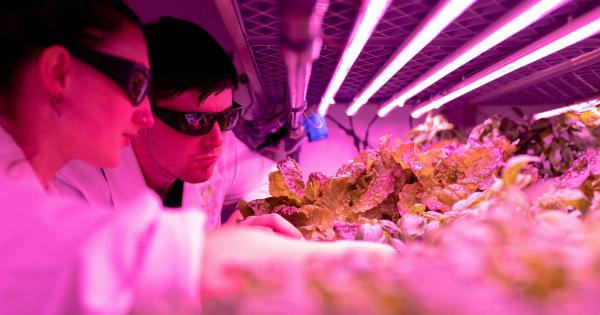The search for a cure for HIV has been a long and arduous journey, but recent developments in the field of artificial toxins have sparked hope among scientists.
These groundbreaking discoveries suggest that artificial toxins may hold the key to curing HIV, providing a glimmer of hope for millions of people living with the virus.
Understanding HIV
HIV, or Human Immunodeficiency Virus, attacks the immune system, specifically the CD4 cells (T cells), which play a crucial role in fighting off infections and diseases.
Over time, the virus weakens the immune system, making the individual vulnerable to a range of opportunistic infections and diseases that can lead to severe health complications.
The Current State of HIV Treatment
While significant progress has been made in managing HIV through antiretroviral therapy (ART), which helps control the virus and allows individuals to lead relatively normal lives, it is not a cure.
ART requires lifelong adherence and can have numerous side effects. Moreover, the stigma and discrimination associated with HIV continue to affect the quality of life of those living with the virus.
The Promise of Artificial Toxins
Artificial toxins, also known as immunotoxins, are man-made molecules designed to selectively target and kill specific cells in the body.
These toxins can be engineered to recognize and attach themselves to certain surface markers found on cells infected with HIV, effectively eliminating the infected cells while leaving healthy cells unharmed.
How Artificial Toxins Work
Artificial toxins consist of two main components: a targeting domain and a toxin payload. The targeting domain is responsible for identifying and binding to the specific cells the toxin is meant to destroy.
In the case of HIV, researchers have focused on surface markers such as the CD4 receptor and the HIV envelope protein.
Once the targeting domain has successfully bound to the infected cell, the toxin payload is released into the cell, leading to its destruction.
The toxin may disrupt vital cellular processes or initiate cell death pathways, effectively eliminating the HIV-infected cell.
Encouraging Research Findings
Multiple studies have shown promising results in using artificial toxins for targeting HIV-infected cells.
In one study conducted by researchers at the Gladstone Institutes, an immunotoxin specifically designed to target cells expressing the HIV envelope protein led to a significant reduction in viral load in mice. This approach demonstrated the potential of artificial toxins for eliminating HIV-infected cells.
Another study conducted by scientists at the National Institutes of Health (NIH) and Emory University targeted CD4 cells using a different immunotoxin.
The results showed a substantial decrease in HIV reservoirs in non-human primates, which could have implications for reducing the viral load and ultimately achieving a functional cure in humans.
Challenges and Considerations
While the use of artificial toxins for curing HIV appears promising, there are several challenges that researchers must overcome. One major hurdle is ensuring the specificity of the targeting domain.
Toxins must only bind to HIV-infected cells and not healthy cells, as any unintended damage to healthy cells could lead to severe side effects.
Additionally, HIV has the ability to mutate rapidly, which means that the targeting domain of the artificial toxin might become ineffective against certain viral strains.
Researchers must develop immunotoxins that can adapt to different strains of the virus to ensure their long-term effectiveness.
The Road to Clinical Trials
Before artificial toxins can be considered a viable treatment option for HIV, extensive preclinical testing is necessary.
Researchers must demonstrate the safety and efficacy of the immunotoxins in animal models, ensuring they do not cause harm to healthy cells and are effective at reducing viral load.
Once preclinical testing is complete, the next step is to proceed to clinical trials involving human participants. These trials will assess the tolerability, dosage, and effectiveness of the artificial toxins on individuals living with HIV.
If the results are positive, the path to regulatory approval and widespread use becomes more feasible.
The Future of HIV Treatment
The potential of artificial toxins in curing HIV is a beacon of hope for millions of individuals worldwide.
If successful, this groundbreaking approach could offer a true cure for HIV, eliminating the need for lifelong antiretroviral therapy and significantly improving the quality of life for those affected by the virus.
However, it is important to note that the road to a cure is still long, and more research and development is needed before artificial toxins can be considered a standard treatment for HIV.
Nevertheless, these advancements offer renewed optimism and emphasize the importance of continued investment and collaboration in the field of HIV research.




























